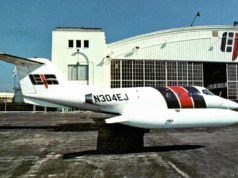In 1946, Nat “King” Cole first sang “Get your kicks on Route 66,” about the fun and romance of long-distance travel by car. Just ten years later Congress enacted the Federal-Aid Highway Act, which created the Interstate Highway System. Federal funds literally paved the way for expeditious road travel throughout the country — for commerce as well as recreation.
The surge in travel by road in the ’50s was paralleled by the post-WWII growth in air travel, which was paid for in much the same way, with Federal funds building the “roadways” in the skies over which today’s airline and business jets still travel.
To date, ongoing operations and maintenance of both roadways and skyways have been paid for from Federal trust funds — the former with gasoline and diesel taxes, the latter with excise taxes on fuel and commercial air travel.
More than half a century later, both are in need of overhaul, and neither trust fund appears to have the money to accomplish the needed “fixes.”
The US Highway Trust Fund is projected to run out of money by summer’s end. The Airport and Airways Trust Fund balance was diverted long ago to cover day-to-day FAA operations. This leaves little to invest in NexGen, aviation’s new satellite-based, digital technologies navigation and communications network. NexGen’s new technologies come with new procedures designed to accommodate the ever-growing fleet of commercial and business aircraft, and keep air travel safe and efficient.
The solution to both shortfalls, according various governing bodies, is user fees. In the case of road travel, state and local governments look to convert free bridges to toll bridges. For air travel, it’s a per-flight segment fee on all instrument flights — and virtually every business jet flight is operated that way.
The daily cost to get to work could increase dramatically, if your commute involves crossing a bridge. And the White House’s proposed $100 per-flight segment fee would add significantly to your business jet travel budget.
Never mind the question of the cost of yet another government department to collect those fees. It’s the fee premise that is most troubling — that only the aircraft owner or passenger benefits from a safe and efficient airway system, and therefore should bear the cost.
Fortunately, the combined efforts of several aviation trade associations have helped keep these taxing efforts at bay in previous years. But stay tuned and stay in touch — the 2015 budget battle has just begun. BAA
Publisher of Business Aviation Advisor, has nearly 50 years in business aviation including executive positions at aircraft management/charter and ground services companies. He is a past director of the NATA and Corporate Angel Network.





